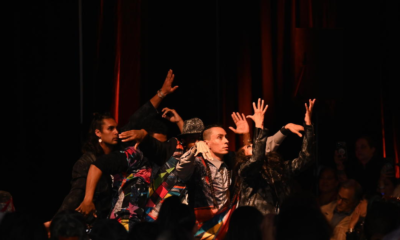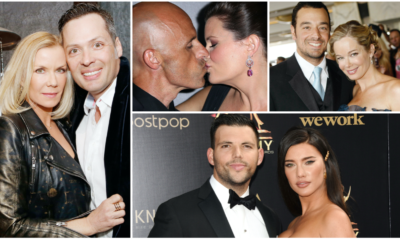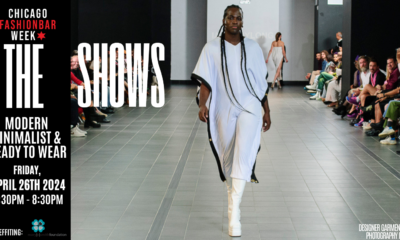Entertainment
A Beginner's Guide to Bollywood – Her Campus

For those who don’t know, the term “Bollywood” refers to the Indian genre of cinema and film, derived from the words “Hollywood” and “Bombay”. As an Indian myself, I grew up watching all kinds of Bollywood classics, and needless to say, I knew what standards were before they were even a thing. Bollywood likes to cater to a lot of audiences, from the hopeless romantics to the ancient history fanatics. But the reason the genre itself has its own name is because of its distinct qualities that set it apart from things like K-dramas and anime. The majority of our music comes from our films, and our stories reflect the richness of our culture as it changes throughout the years. Granted I could be exaggerating my love for these films since there are a ton of cultural references that one may not understand as a non-Indian. However, that is what I’m here for! If you are someone looking to start watching Bollywood films (which I highly encourage), then let me tell you everything you need to know, and even give you a few recommendations of my own so that you can get started on your Bollywood journey.
If you ever look up a Bollywood movie on Google, oftentimes they are categorized as musicals. The reason for this is because almost all of our films have music in them, meaning at some point, someone will break out into song for a dance number. This is separate from what is usually considered a musical in Western cinema since the main story isn’t told through song, they act as small catalysts to the storyline. No, the actors themselves are not singing, and no, this isn’t always part of the plot. However, this is why Indians usually have a different playlist for their songs aside from Western songs, because the songs we listen to come from the movies we watch! So, whenever I want to find an Indian song, I usually ask my Indian friends, “What movie is that from?” instead of “Who sang that song?” or “What album is that from?” The songs in Bollywood films are usually either very upbeat, super romantic, or insanely depressing; there’s no in between. These songs are also the reason why Bollywood movies tend to be very long, ranging from two and a half to four hours. Bollywood likes to reuse a lot of notable people in the industry, actors and musicians alike, so you’ll hear some familiar voices like Shreya Goshal and Arjit Singh. Unironically, Bollywood managed to get the singer Akon on an iconic song called Chammak Challo, which is how I found out who he was in the first place. Despite that, I’ve always had a sense of pride in the idea that we were practically the only people who consistently put songs in movies as a supporting element, so you can imagine my thoughts when I saw the iconic dance scene in Barbie to “Dance the Night Away” by Dua Lipa. Additionally, we pretty much get all of our dances from Bollywood movies as well, so whenever people dance at Indian weddings, they usually take some bits and pieces from the original choreography of the song and put their own spin on it. But if you are one of those people that like to dance at 3 a.m., then Bollywood music is definitely the right fit for you.
Bollywood sometimes has a habit of making movies that are extremely patriotic, and usually the main antagonist is the Pakistani government or the British. For those who don’t know, India and Pakistan have had a rocky relationship ever since Partition in 1947, which segregated the Hindu and Muslim majorities who struggle to coexist to this day. For this reason, there is an entire Bollywood genre dedicated to Indian patriotism, which usually consist of epic fictional stories from RAW, or India’s foreign intelligence agency. In fact, there’s an entire cinematic universe consisting of 5 different movies, 3 of which are a series pertaining to a RAW agent who falls in love with an ISI agent (Ek Tha Tiger), which is Pakistan’s foreign intelligence equivalent and RAW’s supposed rival. Sometimes these stories like to explore the possibility of peaceful relations between the two countries, which are told from the perspectives of seemingly ordinary people rather than government agents. Only recently has Bollywood begun to shift towards criticizing corruption within Indian government systems, such as unfair loans and unreasonable politicians. But aside from that, we usually resort to attacking British occupation, most notably in movies like RRR (where the Oscar winning song “Natu Natu” came from) and Lagaan, an epic story about a group of villagers driving out the British with a cricket match. Personally, I’ve grown to find the action in these films a little cringy, but they can be fun to watch.
One of the things I’ve grown to appreciate about Bollywood is how they portray romance. In films from the early 2000s (which I personally consider to be the golden age), romance wasn’t defined by a spicy scene or even a kiss; it was just the little things. One of the movies that I like to call “the blueprint” of Bollywood is called Dilwale Dulhania Le Jayenge which has a scene where the male lead has to leave because the girl’s father disapproves of their relationship. As he’s leaving on a train, he watches the father on the platform holding onto the girl’s arm, preventing her from running after him. That was until at the last minute, the father lets go and tells her to live her life. Elated, she runs after her love and he holds out his hand to her so that they can get on the train together and live happily ever after. I’d say that romance is one of Bollywood’s most creative genres, and it is beyond perfect for the hopeless romantics. Hindus believe in the idea of reincarnation, which is being born again into a different life after death, and there is an amazing movie called Om Shanti Om that pays homage to the Bollywood industry while unraveling a love story that transcends lifetimes. Bollywood also deals with emotional maturity in movies like Yeh Jawaani He Deewaani, where he chooses to give up his life’s dream in order to be with her. Then there’s times where he knows he doesn’t have much time left, so he has her fall in love with someone else so that she’ll be happy even though he has to let her go (Kal Ho Naa Ho). And this is just scratching the surface, but usually the romance is a subplot to the main storyline, which for some reason is almost always a revenge story. For example, a movie called Happy New Year features a group of losers joining together to pull off a diamond heist and take down the murderer of the main character’s father…through a dance championship? There are even more modern films that deal with repairing friendships through a bachelor’s trip to Spain in Zindagi Na Milegi Dobara, and a deeper dive into the patriarchal structure of Indian families hindering the dreams of the youth in Dil Dhadakne Do. Overall, Bollywood has created a completely different set of standards for romance in film, and I’ve appreciated the fact that it has always been contingent on the little interactions that get me emotionally invested in the chemistry rather than the nitty gritty (which is also great for my aro-ace heart).
Though Bollywood tends to reference other more iconic movies within movies, there are also a slew of cultural references that one might not understand as a person of non-Indian origin. This largely translates to wedding culture, for some reason, as well as some larger references to Hinduism. The first is the sindoor (hindi for vermillion), which is essentially a red powder that women wear on the space where the middle part begins on the forehead. This signifies that a woman is married, and is usually worn every day, similar to a wedding ring. Another indicator of marriage is the mangalsutra, which is a gold necklace lined with dark beads that a wife typically wears. Additionally, there is also a wedding tradition where the bride and the groom tie their dupattas (Indian scarves) together and walk around a fire 7 times, which signifies that they will be together for 7 lifetimes. The bride wears red for weddings, and everyone wears white for funerals. The deceased are usually burned in a bonfire, and their ashes are sometimes held in an urn. Usually if a scene cuts to a metal pot with a red cloth on top or a huge bonfire with a bunch of people wearing white standing behind it, it means someone died. It is also sometimes tradition to release these ashes into one of India’s sacred rivers, usually Yamuna and Ganga. If there’s a picture frame in the background with a garland, it means that the person in the picture has died. Finally, the two main festivals that you should know are Diwale and Holi. Diwale is the festival of lights, which usually involves a bunch of firecrackers, tiny pots with candles in water, and other holy ceremonies. Holi is the festival of colors, which involves people dressed in white (not for funerals) and throwing brightly colored cornstarch powder at each other. Then of course there’s the patriarchy, where there are old ideals of women having to give up their jobs and their dreams to provide for their home, as well as sons catering to their father’s desires rather than listening to their hearts. And there is also the idea of arranged marriage, which is not the same thing as a forced marriage and is when two people are usually set up between families and are set to marry each other (this was very common in the older generation).
In addition to those already mentioned, here are what I consider to be films that are both beginner friendly and cinematic masterpieces.
Though there’s quite a bit to know, I genuinely think Bollywood is one of the best film genres out there and should get a lot more global recognition. The majority of these films are available on Netflix, while some are on Amazon with prime. I know that I’m a person who is always in need of something new to watch and sometimes to feel nostalgic. So, I go back to some of these films and look at them from a much older perspective, which leads me to finding new things. But for those who are getting tired of K-dramas and aren’t feeling any of the new Netflix originals, then I urge you to give Bollywood a try. Who knows? You might just find what you’ve been looking for.
The newsletter you won’t leave unread.
USFSP ’27
(but via email)
The newsletter you won’t leave unread.
Entertainment
Music Week – Music Week

Login
For assistance please contact Our Customer Service on: Tel: +44(0)20 8955 7020. Email: [email protected]
Please enter your email so we can send you password reset link.
An email has been sent to you containing a link to reset your password
For assistance please contact Our Customer Service on: Tel: +44(0)20 8955 7020. Email: [email protected]
Warner Music Group has signed singer, dancer and actor Nora Fatehi. It is her first agreement with a major global record company.
The partnership is to promote Fatehi’s global music career, working with teams in the US and across the world. She will remain signed to T-Series, the Indian music label and movie studio, for her Bollywood projects.
Based in India, Fatehi was born in Toronto to a family of Moroccan heritage. She first made her name as a Bollywood actress, appearing in Hindi, Telugu, Tamil and Malayalam films.
She has built a fanbase all around the world, with more than 46 million followers on Instagram and 21 million on Facebook. Her music has generated more than 1.2 billion streams and five billion-plus YouTube views on her featured videos.
In 2018, she appeared in the movie Satyameva Jayate, in which she performed a version of the classic Bollywood song Dilbar, which generated more than 20 million views on YouTube in the first 24 hours of its release. She then recorded and sang an Arabic version of the song, in collaboration with the Moroccan group Fnaïre, expanding her audience across the Arab world. She went on to become the first Arab-African artist to hit one billion views on a single music video on YouTube.
Fatehi’s other ventures into international music include collaborations with performers such as Tanzanian singer-songwriter Rayvanny for the track Pepeta, as well as British singer Zack Knight for Dirty Little Secret.
Her latest film, Crakk – Jeethegaa Toh Jiyegaa, was released on Friday (February 23).
Nora Fatehi said: “I’ve enjoyed great success in my career so far, but this deal is a significant step forward in my musical journey, a new chapter in my international career. My ambition is to be a global music star and performer, connecting with fans all over the world. I want to use my diverse cultural background to create music and dance that brings everyone together! I’m excited to work with Warner Music to leverage their experience and expertise to help me fulfil this goal.”
Robert Kyncl, CEO, Warner Music Group, said: “Nora is an extraordinary talent, electric performer, and cross-cultural superstar whose music reflects the rich diversity of her background. Her passion and ambition are infectious and we’re excited to help her reach new audiences, places, and heights across the globe.”
Alfonso Perez-Soto, president, emerging markets, Warner Music, said: “I’ve been blown away by Nora’s starpower. She has the creative ability and sheer stamina you need to become one of the world’s biggest artists. We can’t wait to put the global resources of Warner Music at her disposal as she starts the next chapter of her music career.”
PHOTO: Apoorv Maurya Photography
For more stories like this, and to keep up to date with all our market leading news, features and analysis, sign up to receive our daily Morning Briefing newsletter
Entertainment
Indigenous fashion takes the runway with an eye to history — and the future – CBS News
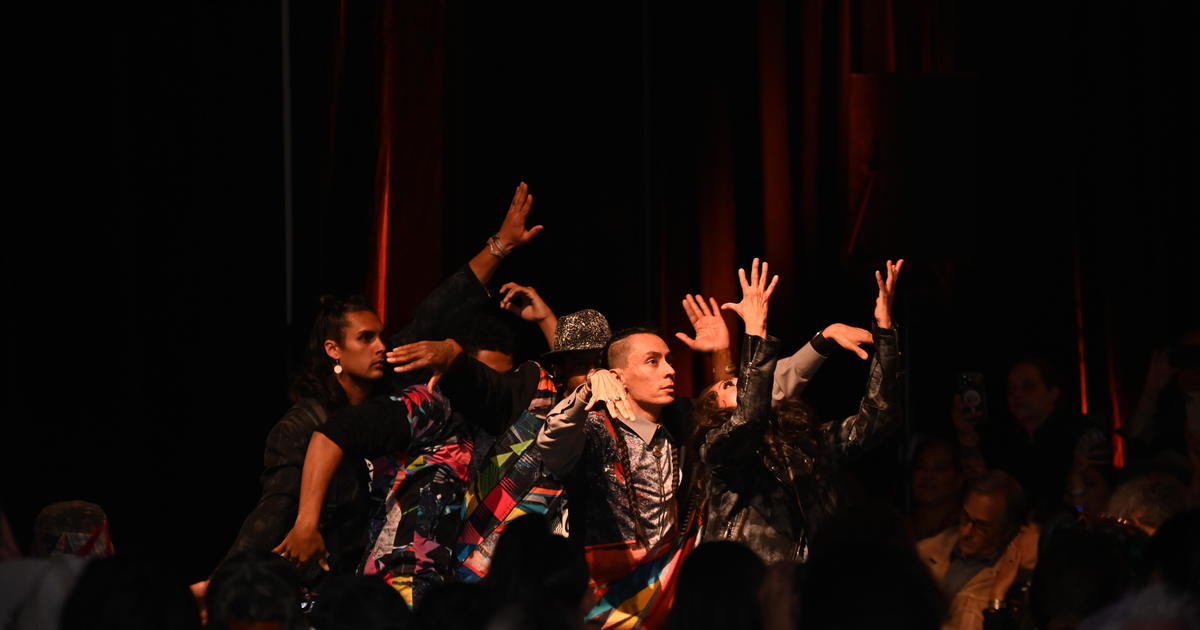
Watch CBS News
By
/ CBS News
Comanche chanting kicked off the Southwestern Association for Indian Art’s inaugural runway show, as singer Marla Nauni opened with a blessing song for Native people. Peshawn Bread, the designer behind House of Sutai, quickly followed the prayer by sending a model in bell bottoms and roller skates down the runway to set the tone for her colorful disco-influenced collection.
It was the start of Native Fashion Week in Santa Fe, where dancers draped in reimagined indigenous looks twirled alongside models in nontraditional silks with Native motifs. They showed off creations that juxtaposed modernity and traditional Native ceremony.
Peshawn says she used elements of the 70s to represent a difficult time for indigenous people – when the American Indian Religious Freedom Act passed in 1978. The act protects Native American religious practices and customs, which had been illegal under previous laws.
“We were fighting for our practices and spirituality and didn’t have time to go to the disco. Like you hardly saw any Natives in discos,” said Bread. “… So, I wanted to say, well, in the 70s what if we had pure Indigenous joy? What would it look like? Would we incorporate our materials or designs like weaving patterns in our fabric?”
One of the largest gatherings of Native American fashion, more than 17 of the hottest Indigenous designers from across dozens of tribes in North America came together starting last weekend to celebrate their achievements outside of major fashion houses.
Amid pro-Palestinian demonstrations on college campuses and in front of the Met Gala, Navajo nation designer Carrie Wood pointedly addressed disparity in indigenous culture in America as well as expressed solidarity with the pro-Palestinian protesters in her collection. Wood sees the conflict Palestinians are facing as akin to the struggles of Native Americans. Her final piece to hit the runway and close out the first day of Native Fashion Week combined elements of Palestinian traditional garments juxtaposed against Native American dress. The model wore a Navajo-style tiered skirt made out of the Palestinian keffiyeh. Wood connected the similar use of accessories such as scarves and jewelry in both cultures to unify the style.
Many designers noted the difficult history, expressing fears that Native peoples are seen as a monolith, relegated to history — a lack of nuance that drives many Native artists to be protective of their work.
Amber-Dawn Bear Rope, who is part of the Siksika nation in Alberta, Canada, and the director of the Southwestern Association for Indian Arts, which put on the four-day event, started the organization on a shoestring budget in 2014. She hopes the show is the launching pad for many within the indigenous community to create their own unique brand after generations of being forced to fit a cultural mold.
“This is creating our own space for us to meet and have an experience within our own worldview of fashion and indigenous design,” she said. “Native American artists were the original courtiers of fashion in North America.”
Events like the fashion week, she said, are a way for Native American creatives to take back the narrative on what it means to be indigenous.
Kayla Lookinghorse-Smith, an up-and-coming Lakota-Dakota Sioux designer, hopes to bridge the gap between history and modern design, “[my work] doesn’t take away from our protective ceremonial garment or our stories. It speaks to two worlds. We have to walk in today’s society, and we have to remember who we are,” Lookinghorse-Smith said.
Mainstream interest in Indigenous dress and culture in the wake of the award-winning film “Killers of the Flower Moon,” based on the bestselling book of the same name, TV series “Reservation Dogs” and other Native-focused entertainment is driving designers and attention to their work.
Celebrities such as Lily Gladstone and Quannah Chasinghorse are drawing attention to indigenous pieces on the red carpet and award ceremonies. At this year’s Met Gala, Chasinghorse wore jewelry from beadwork artist Heather Dickson to pair with her custom H&M dress. Meanwhile, Gladstone’s Met Gala gown incorporated embroidered star-shaped jewelry from renowned Great Plains artist Keri Ataumbi.
Bread’s mother, Jhane Myers, a producer and Native consultant on Hollywood productions including 2022’s “Prey” and Showtime’s “The Curse,” sees the renewed attention on Native culture as a cyclical trend. She said she’s seen support build every 25 years, but it dissipates before Natives reach true success. Myers, who has also collaborated with major fashion labels such as Ralph Lauren as part of her work with the Indigenous fashion community, believes that this moment will be different — because Indigenous creatives are working within Hollywood as directors, writers and producers, so the wider narrative can be influenced by those who understand it.
Comanche and Cherokee designer Bread hopes with Hollywood interest and events like SWAIA’s Native Fashion Week, Indigenous dress and designers can catch the eyes of larger fashion houses and brands.
Already, her close friend, Diné weaver Naomi Glasses, has gone from a fellowship with former Chloe creative director Gabriela Hearst as part of Creative Futures, which provides opportunities for creatives, to now working on a major collaboration with Ralph Lauren. Bread said that these opportunities allow Native designers and brands to work together ethically instead of facing potential struggles with appropriation.
Designer Heather Bouchier from Beardyʼs & Okemasis’ Cree Nation in Saskatchewan Treaty Six Territory in Canada says that Native celebrities have given her the chance to walk her dresses down red carpets. One of her dresses, fitted for a high-profile Native American actor at the Canadian Screen Awards, will feature pieces made out of 3D printed dentalium shells, an Inuit or First Nations tusk-like jewelry often used in commerce. She says because the material is rare, she takes a sustainable approach to design by 3D-printing the shells.
Actor Wes Studi, who has received an Academy Honorary Award for his roles in acclaimed films such as “Dances with Wolves” and “Last of the Mohicans,” attended the SWAIA fashion show to watch his granddaughter’s debut appearance as a runway model. Over the past several decades, acting roles for Native Americans have been inconsistent. But watching his granddaughter blossom in her modeling career is a moment of generational impact.
First published on May 11, 2024 / 9:34 AM EDT
© 2024 CBS Interactive Inc. All Rights Reserved.
Copyright ©2024 CBS Interactive Inc. All rights reserved.
Entertainment
Prada Theories, WME Fashion Whispers & Net-a-Porter Murmurs – Puck

Already a member? Log In
Hi, and welcome back to Line Sheet. I’m in the home stretch of this New York trip. I’ll be back soon, I’m sure. I can’t believe the cost of cabs these days.
Last night, I canceled three meetings uptown to squeeze in an extra hour of work (I know, it doesn’t compute), tried to get a manicure at Jin Soon (booked solid, bless them), then headed over to Genesis House for a dinner hosted by Alina Cho in honor of Cate Holstein, who was wearing a beautiful striped blouse of her own design. Vanessa Traina, Lauren Santo Domingo, and Khaite C.E.O. Brigitte Kleine were all there, too, looking fabulous. The food was very good, and Cate and I discussed the greatness of Rebecca Ramsey, and Nicole Phelps and I somehow managed to get into it about The Idea of You with Cate’s husband (and store architect) Griffin Frazen. (I hope he doesn’t mind me revealing that he liked it!) It was a perfect post-Met dinner with the most New York fashion brand.
🚨🚨 Programming note: Tomorrow on Fashion People, I talk with High Sport founder Alissa Zachary—who actually used to work at Khaite—about why everyone is so obsessed with her and her stretchy pants. Subscribe here.
Also: If you’re reading this huddled over your boss’s computer because you’re worried I’ll be able to tell that she’s been forwarding my work to you… you should be worried. I am coming for you! Why not organize a group subscription instead of behaving so reprehensibly? Email [email protected] for more details. Or just sign up here.
Mentioned in this issue: Susan Plagemann, IMG Models, Lorenzo Bertelli, Prada, Armani, Bella Hadid, Ivan Bart, How Long Gone, Victoria’s Secret, Carolyn Murphy, Shalom Harlow, Amber Valletta, WME Fashion, NYFW, Net-a-Porter, Walmart.com, Kering, LVMH, the Wertheimers, Chanel, and many more…
Anyway, absolutely no one should be surprised by the younger Bertelli’s remark. Remember, Prada is preparing for its debut on the Milan Stock Exchange, and it’ll need to continue to figure out ways to increase shareholder value that don’t require an 89 percent jump in sales at Miu Miu every quarter.
Don’t forget, though, that 25 years ago, Prada did try to build a group to rival a then-nascent LVMH and Kering—picking up Jil Sander, Helmut Lang, and Church’s. It kept the English brogue-maker but sold off Jil Sander and Helmut Lang within a few years. (There’s a great 2005 piece by Eric Wilson, my all-time favorite Styles writer, about what happened. In short: It wasn’t easy for Patrizio Bertelli to deal with creatives like Lang and Sander.) Building a group now, given the market dominance of LVMH, is obviously even more challenging. But perhaps the Bertellis see an opening for a pure-play fashion group as LVMH moves further into the lifestyle business and Kering shakes off its demons.
As for whether Armani would be a good first move: They like to call a brand like that a “sleeping giant”—i.e., the bones are there for it to be far bigger than it is. However, it’s a clothing business, not an accessories one, and it’ll take a lot of work to adjust those priorities. I’d be more interested in seeing a Kering-Prada Group merger—it would give everyone involved a real fighting chance. As for that pesky rumor about the Wertheimers being interested in acquiring Prada? I still think it’s a good idea. Actually, Kering-Prada-Chanel altogether is the best idea.
But fashion being fashion, the take-private was the latest in a growing litany of grievances, both real and imagined, swirling around WME Fashion. The fashion group, after all, was already undergoing a significant and long-overdue restructuring, starting with the hiring of former Condé Nast executive Susan D. Plagemann as president. Since her arrival, in 2022, Plagemann had shuffled staff, reorganized divisions, and eliminated others, all in the name of focus. Alas, fashion people don’t like change, and there have been audible rumblings. But as the fashion world corporatizes—migrating from a madcap collection of family-run firms to modern C.P.G. conglomerates—the agencies needed to do the same. (Disclosure: WME represents Puck. I’m represented by UTA for book-related stuff.)
The heart of the matter, according to the aggrieved, was that Bart was the glue that held IMG together. Many of the models who left were Bart’s loyal clients, so in many cases there probably wasn’t much IMG could do to keep them. And there’s no doubt that WME higher-ups expected to lose clients when Bart stepped down. A representative shared the following statement with me from WME co-chair Christian Muirhead: “We are invested in the future of our fashion portfolio and will continue to make necessary changes that anticipate the evolving landscape to best meet the needs of the clients and partners we serve.”
Plagemann has made branding WME Fashion a major component of her role, even running an advertising campaign featuring the company’s talent roster during New York Fashion Week. Jeni Rose, a longtime Bart deputy, and The Wall Group’s Kate Stirling and Ali Bird, were elevated to manage the stylist and modeling businesses under Plagemann, which they have done profitably. A few months later, Plagemann hired her own girl, Sally Singer, to run Art + Commerce, with the idea that the former Vogue creative’s deep industry connections would be enough to keep that network of photographers and art directors happy.
Plagemann’s directive was likely to standardize these niche businesses to better mirror WME, the talent agency and the main revenue generator in Endeavor’s $1.5 billion representation portfolio. It wasn’t always going to be an easy fit, however. Talent representation is pretty straightforward: You book a talent on a job, and earn a 10 percent commission. Modeling agencies are muddier: Agent-manager hybrids can earn anywhere from 5 to 30 percent. Models also tend to start when they are very young, and so people like Bart serve as parental figures, adding to the complexity of the relationship.
Recently, she sent an email to the division sharing a Bloomberg article about Kering’s financial slump, asking the team to share ideas on how WME could help support the French luxury group. “An important read for everyone given our relationship to not only Kering and LVMH, but all beauty, fashion, and luxury,” she wrote. “Earnings are being posted so this is a time to lean in and think about how we can all be solutions-oriented to these companies. It’s clear they need ideas.”
For years, agencies have tried to contort themselves as brand advisors, using their elan and expertise to extract retainer fees. Plagemann is really only doing what other executives across the business do. But these sorts of directives have nevertheless rubbed some critics and lifers the wrong way. “She doesn’t understand that the employees of WME Fashion are not consultants, but rather managers and agents that should be more focused on booking their talent than thinking of strategies for other organizations,” one person said. “She’s trying to turn the division into a Condé Nast publishing company, which is far from what made all the divisions of WME Fashion successful.”
Meanwhile, IMG Models has been reconfigured to look nothing like a traditional modeling agency, even discarding the traditional concept of modeling boards, wherein agencies typically have a main board for top talent, a development board for up-and-comers, etcetera. Today, IMG employees are instead divided into “pods of excellency,” grouping teams by their role rather than the types of talent they represent. Some industry observers have asked if WME should simply absorb the IMG Models roster into its own since there are few models left who generate enough money to justify the work that goes into a 10 percent commission.
Naturally, as Plagemann reorganizes WME Fashion into a more modern structure, plenty of people have wondered if all its shingles should be absorbed into WME. For now, though, management seems to have decided that the names are important enough to keep, and the services are distinctive enough to require unique branding. In the past few years, Hollywood has finally realized how lucrative fashion can be, in part because its core business is dwindling. But there are few people working in Hollywood who understand the nuances of fashion. And Plagemann, who spent most of her career selling the easiest media brand to sell—Vogue—happens to be one of them.
Tapestry says that the F.T.C. lawsuit against the merger with Capri “makes no sense.” [WWD]
Zalando is reportedly putting money in to help get the Saks-Neimans deal completed. [WWD]
Apple as we know it is over. [The New Consumer]
She looks good. [Twitter]
Interesting that Richemont bought Vhernier, because there were some false Italian reports last summer linking the jeweler to Kering. [WWD]
Amanda and Juliet are the last word on Met Gala fashion. (No, really, let’s stop talking about it now.) [Jam Session]
One last thing, actually. Tory Burch did the Met theme justice in a Sarah Burton-designed Alexander McQueen dress, from her own closet, at the gala. Also, listen to her on Pete Nordstrom’s podcast. [Nordy Pod]
Until Monday,
Lauren
Need help? Review our FAQs
page or contact
us for assistance. For brand partnerships, email [email protected].
You received this email because you signed up to receive emails from Puck, or as part of your Puck account associated with . To stop receiving this newsletter and/or manage all your email preferences, click here.
Puck is published by Heat Media LLC. 227 W 17th St New York, NY 10011.
SEE THE ARCHIVES
Sign up today to join the inside conversation at the nexus of Wall Street, Washington, Silicon Valley, Hollywood, and more.
Already a member? Log In
Exclusive to Inner Circle only
Enter your email for a free preview of Puck’s full offering, including exclusive articles, private emails from authors, and more.
Verify your email and sign in by clicking the link we just sent.
Already a member? Log In
Start 14 Day Free Trial for Unlimited Access Instead →
You have 1 free article Left
To read this full story and more, start your 14 day free trial today →
Already a member? Log In
All of the insider knowledge from our top tier authors, in your inbox.
Already a member? Log In
You should receive a link to log in at .
I DID NOT RECEIVE A LINK
Not a member yet? Sign up today
You should receive a link to log in at .
I DID NOT RECEIVE A LINK
Use a different sign in option instead
Member Exclusive
You are logged into a free account as [email protected]
Already a member? Log in with your paid account
A new economic model in which writers are also partners in the business.
Customize your settings to receive the newsletters you want from the authors you follow.
Connect directly with Puck talent through email and exclusive events.
You are logged into a free account as [email protected]
ENJOY 1 FREE ARTICLE EACH MONTH
Subscribe today to join the inside conversation at the nexus of Wall Street, Washington, Silicon Valley, Hollywood, and more.
-
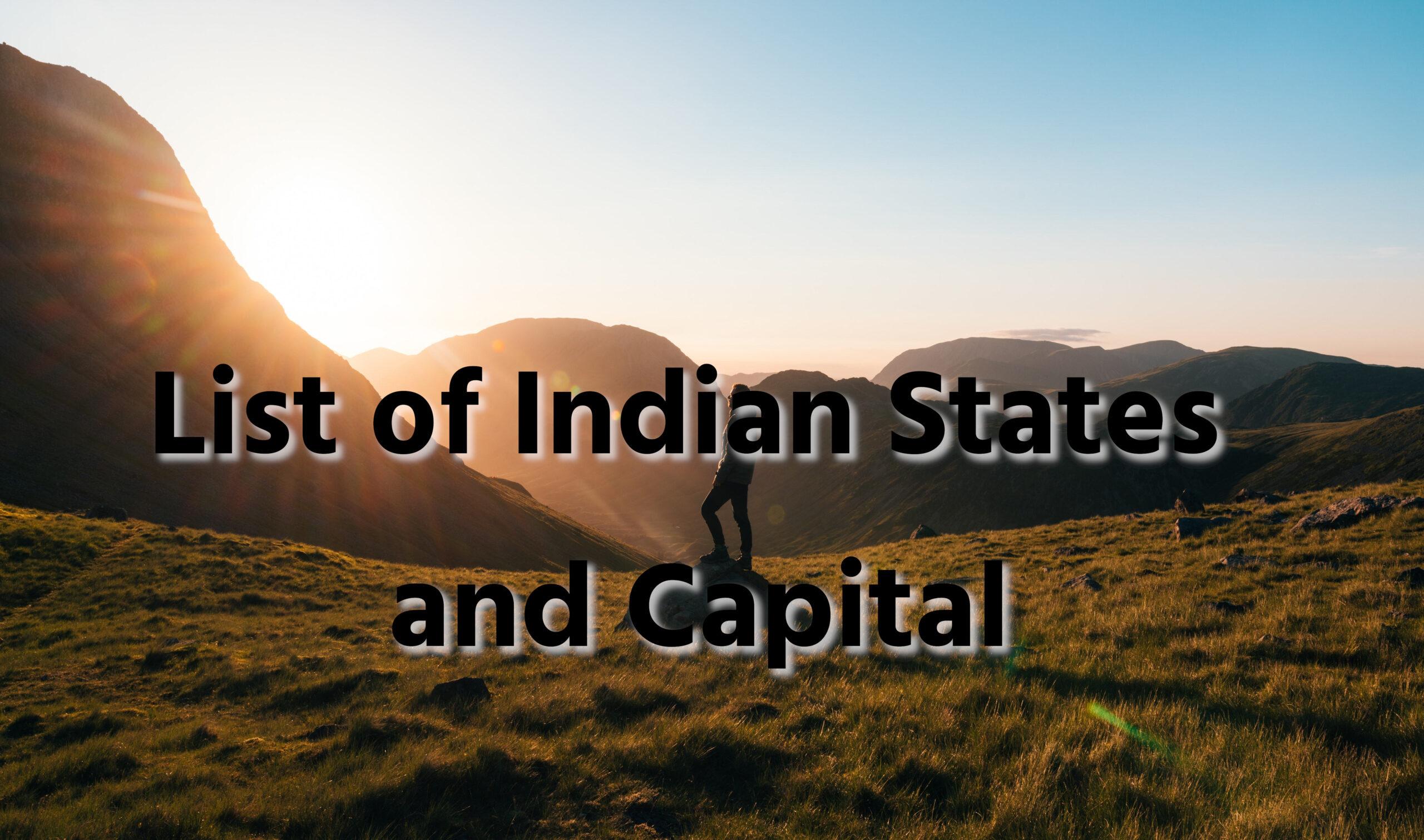
 General Knowledge2 years ago
General Knowledge2 years agoList of Indian States and Capital
-

 General Knowledge2 years ago
General Knowledge2 years agoList Of 400 Famous Books and Authors
-
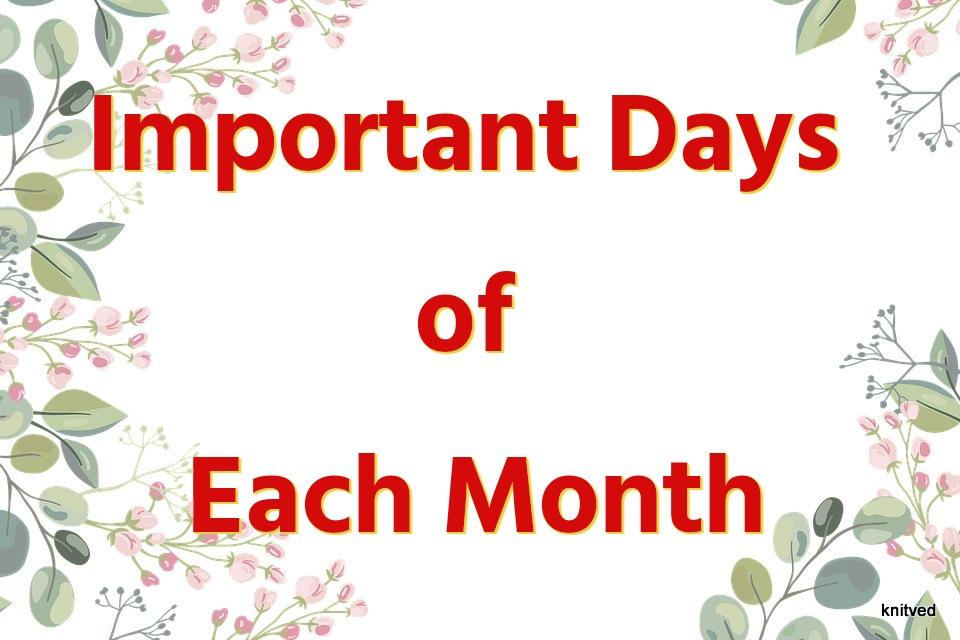
 Important Days4 years ago
Important Days4 years agoImportant Days of Each Month
-
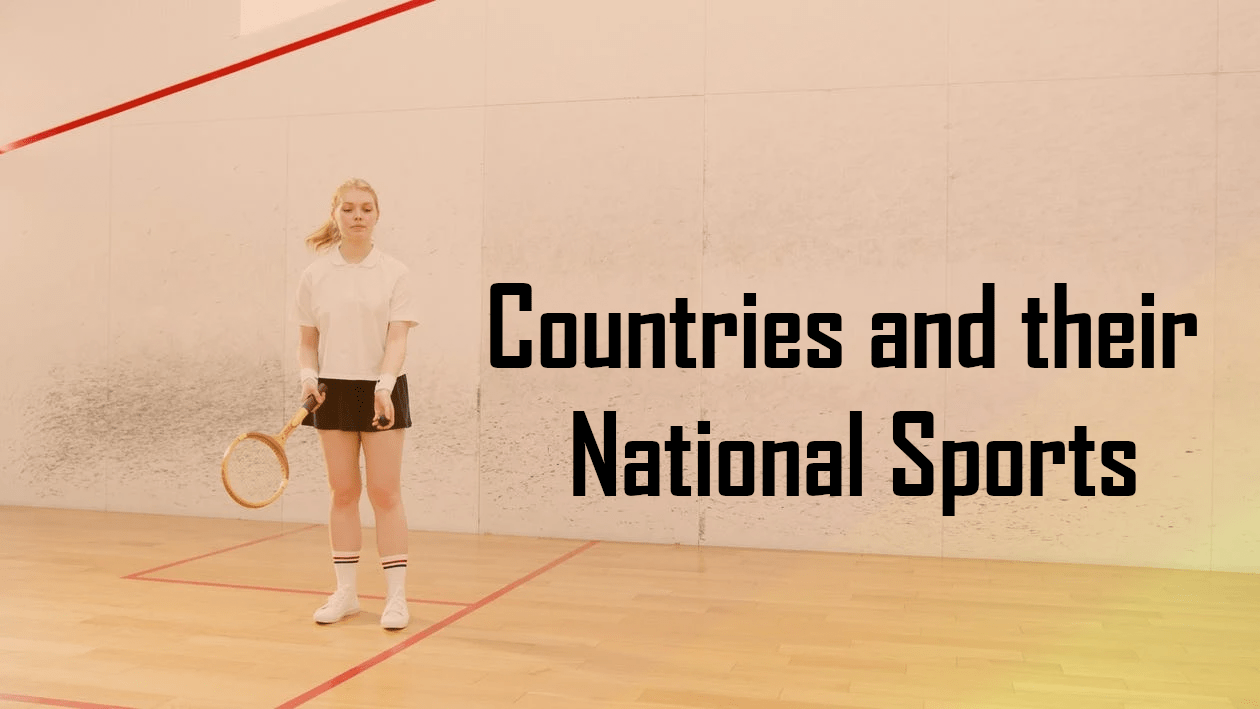
 General Knowledge2 years ago
General Knowledge2 years agoCountries and their National Sports
-

 General Knowledge3 years ago
General Knowledge3 years agoCountry Capital and Currency
-

 Important Days3 years ago
Important Days3 years agoHoli
-

 General Knowledge2 years ago
General Knowledge2 years agoList of Indian President
-
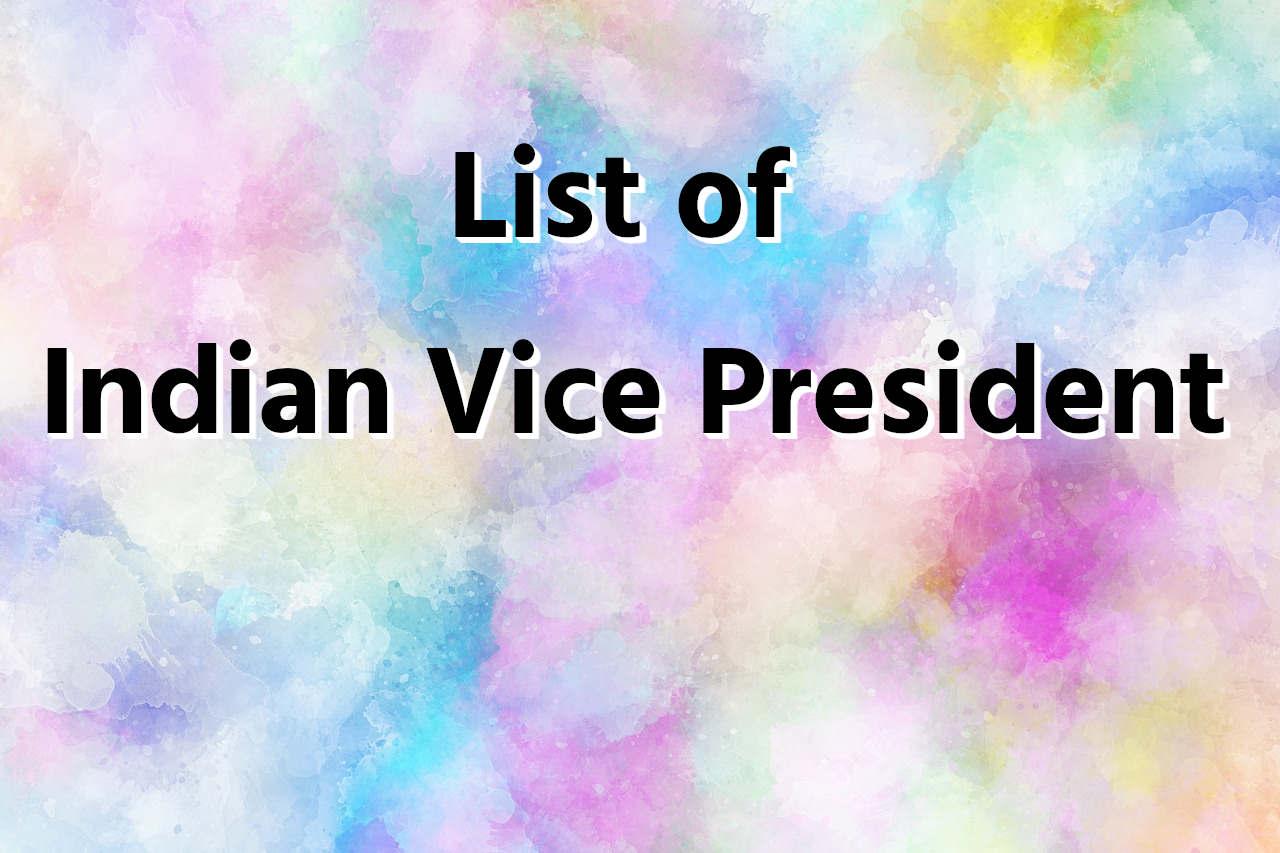
 General Knowledge2 years ago
General Knowledge2 years agoList of Indian Vice President




